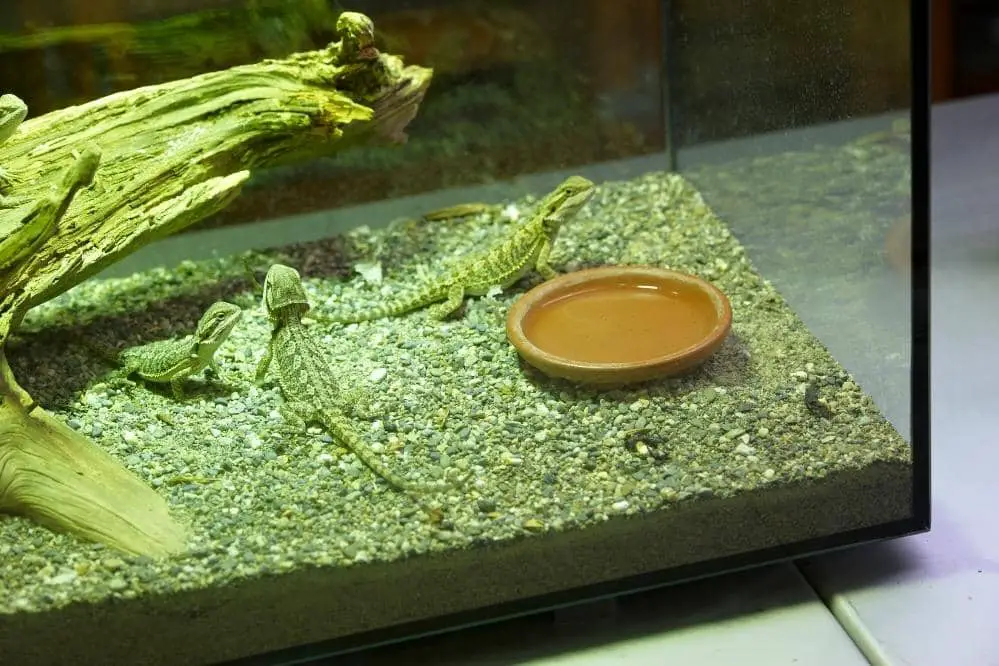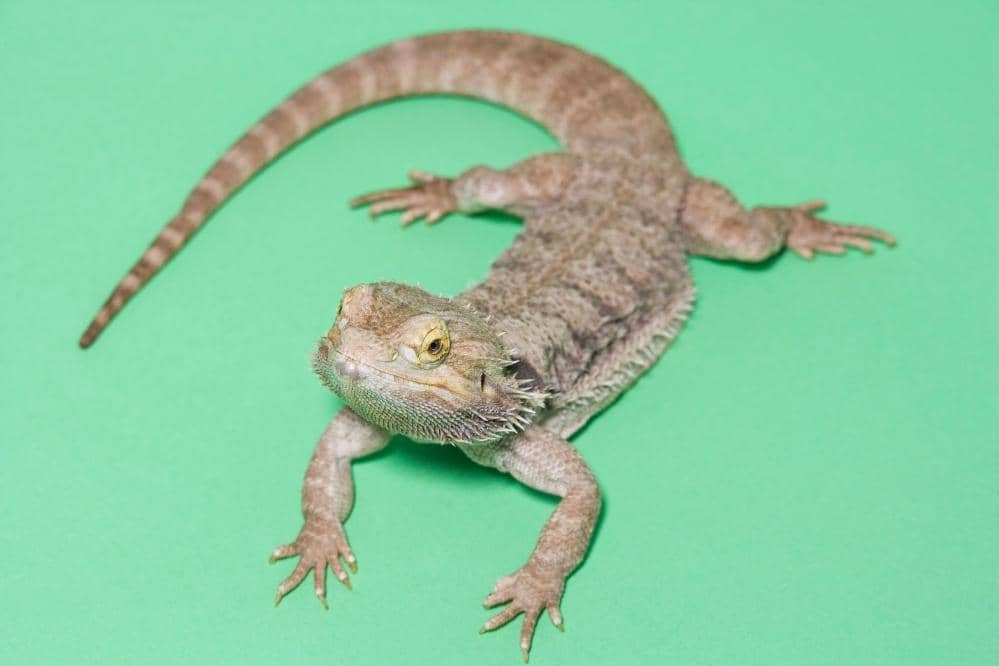Bearded dragons, in contrast to other lizards, who are capable of doing so, do not shed their tails since they do not require this behavior in order to avoid potential threats and predators. Instead, they employ various strategies to protect themselves from predators.
It is possible for them to lose their tails if they are grasped too roughly, if they shed their skin, or if they develop tail rot. Stop the bleeding and take them to the veterinarian as soon as possible if they lose their tails.
What Causes Bearded Dragons To Lose Their Tails?
Bearded dragons can lose their tails under the following circumstances, as they do not do so out of fear:
1. The tail may be bitten or cut
It is typical for many bearded dragons or lizards in the same cage to lose their tails. If a lizard is frightened, it may bite the tail of another bearded dragon or lizard in the cage.
If your beardie has a tail that appears to have been chopped off with scissors, the likelihood is that another animal in the environment is biting its tail. Their territorial instinct and desire to dominate (other animals or lizards in the same habitat) or struggle for food can drive lizards to become aggressive.
Any heavy item can also press down the tail and entirely remove it without any further effort from the aggressor. This can occur if the dragon’s tail stucks beneath a feeder dish or some other heavy item and cannot escape.
Physical damage is an additional cause of tail loss in bearded dragons. If they are too near to a hostile animal or person, their tail might be accidentally trodden on or smashed into a hard surface such as a wall or floor. Other household pets, such as dogs and cats, can also be playful and accidentally chop off the tail.
Related Article Are bearded dragons scared of dogs?
2. The tail may rot
Bearded dragons get tail rot when their tails become infected. Tails are also susceptible to tail rot if another lizard or animal bites them; thus, bearded dragon owners must ensure that their pet lizards have a wide enclosure with plenty of hiding places and locations where other animals cannot reach the dragon’s tail.
Some pet owners may believe that if the tail falls off, this indicates that the tail is infected, causing it to fall off. However, in the majority of instances, trauma is the cause of tail detachment (accidental injury). This sort of mishap causes damage right around the base of the tail and frequently results in bleeding at the injury site.
3. It could be a shedding problem
Bearded dragons can lose their tails if the shedding process doesn’t proceed as well as it should. If the process of shedding the tail is not carried out properly, the tail may be cut because a layer of cells that is too dense may obstruct the flow of blood to the tail. It will eventually become dead and fall to the ground.
4. Calcium deficiency
Bearded dragons require a nutrient-rich diet that includes calcium. Calcium influences their health, growth, and more. A calcium deficit may cause metabolic bone disease in your bearded dragon and impair its capacity to properly shed skin, resulting in bits of dead skin adhering to the dragon’s tail or other regions.
How To Prevent Bearded Dragon Tail Loss?
Now let’s dwell into how you can prevent the tail loss.
1. Provide adequate living space

If you wish to prevent tail loss in your bearded dragon, it is essential to provide them with a single-lizard habitat (one beardie in one enclosure to avoid territorial conflicts) and enough area to explore. Give them plenty of objects to climb, hide, and explore with their tails. This will aid in reducing stress levels and avoiding tail biting.
2. Proactively prevent and treat tail rot
When the tail of a bearded dragon begins to decay, it is frequent indication that the reptile has been experiencing persistent health issues. This condition, which can be caused by parasites or injuries, must be treated immediately if you want your bearded dragon to recover correctly.
Check under their scales on a regular basis for symptoms of swelling, wounds, or infection. If you find something improper, apply antimicrobial ointment carefully. Ensure that your beardie always has access to plenty of water and fresh fruit.
3. Ensure appropriate shedding
The superb strategy to avoid tail loss is always to maintain a healthy diet (high-quality food) and surroundings. The emphasis should be on sufficient nutrition, adequate sunlight, and a stress-free environment. Thus, shedding of the skin is facilitated.
During periods of shedding, they may annoy one another (and frequently get involved in fights) if the cage is overcrowded. Such disruptions may result in problems, including tail rot.
What to do if the tail of your bearded dragon drops off?
If your bearded dragon loses its tail, you must immediately take it to the veterinarian. In addition, your bearded dragon may experience discomfort, bleed, and become infected if you do not sanitize the area immediately.
The tail will not regrow on its own; therefore, you must aid in its recovery with medicine and a healthy diet. If left untreated, there is a chance that infection may progress further to other organs of the body.
The closer the cut of the bearded dragon’s tail is to its torso, the greater the likelihood that it will bleed heavily. You should avoid excessive bleeding by exerting pressure with a sterile piece of gauze.
Is it possible for a bearded dragon to survive if it loses its tail?
Bearded dragons can, in fact, survive without their tails, but they will have trouble maintaining their balance for the remainder of their lives. They can have trouble climbing, running, or even walking normally.

